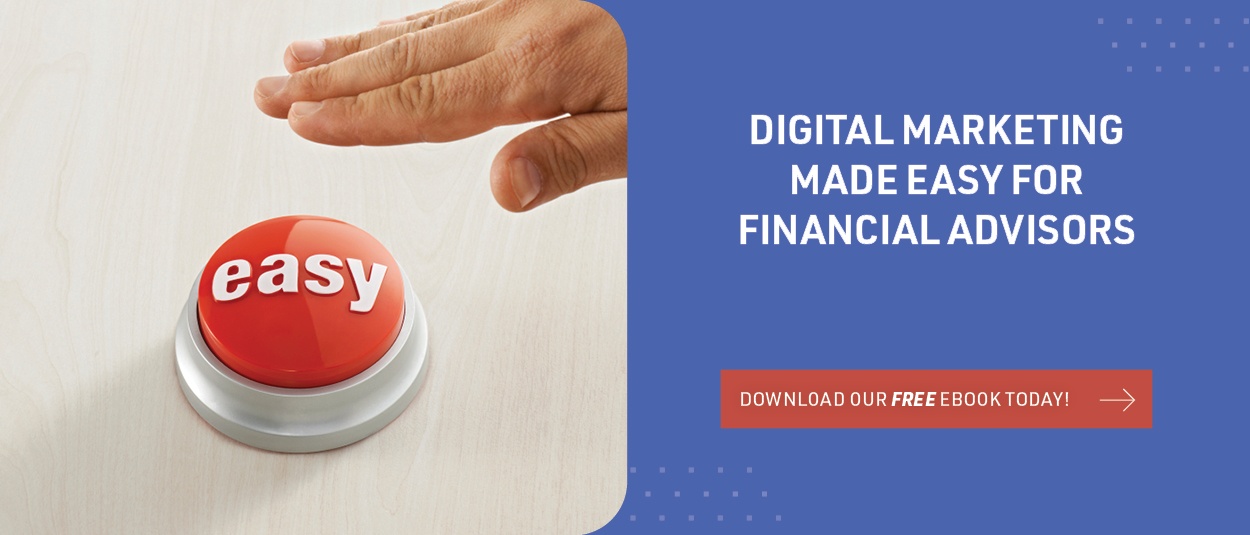

Why Hyper-Personalize Your Financial Advisor Marketing Strategy?
As more aspects of our daily lives involve digital—from banking to grocery shopping and even earning a paycheck—access to online information is becoming the new currency. For digital marketing efforts in industries across the board, having the right information at the right time can make or break any digital marketing campaign.
And once you have the information, it all comes down to how you use it. Too little personalization and a prospective client can feel like just another number. Too much personalization can feel superficial and irrelevant.
Get the right financial advisor marketing strategy! Connect with Paladin Digital Marketing today!
Personalization vs. Hyper-Personalization
Personalization is nothing new for financial advisors. Given every client has unique financial characteristics, financial advisory services have always catered to the needs of specific clients.
Hyper-personalization is part of a next-gen financial advisor digital marketing strategy – based on all 50 year old couples are not the same. They have major differences that impact the advice and services of financial advisors. Hyper-personalization is a primary strategy for attracting potential clients to a financial advisory firm. For example, a connection is made when financial advisors publish high-quality content on their blogs, thereby establishing their firms as trustworthy financial experts. The more you are a resource that provides a consistent flow of high-quality financial information the more often they will contact you when they are seeking financial advice and services they trust.
Examples of Hyper-Personalization
Many consumers already experience some form of hyper-personalization in their daily lives without realizing it. Examples include Amazon and Netflix. These platforms not only know a great deal about consumers such as name, age, gender, location, buying habits, etc. They can use this information to predict how consumers will react to certain types of ads.
With this information, they can provide highly customized recommendations for what you may want to purchase or watch next. While some consumers may find this a disturbing invasion or their privacy or at a minimum make them extremely uncomfortable, others find it extraordinarily useful showing a distinct preference for digital relationships that are hyper-personalized.
This preference for or against hyper-personalization is generally (but not always) attributed to generational differences. Baby boomers were not raised with technology or anywhere close to what Gen Z has experienced. And while Gen X is somewhere in the middle of the gap, the upcoming Gen Alpha will have never known life without technologies they take for granted. Because of these differences, hyper-personalization experiences should look different for each generation of consumers.
AI’s Role in Hyper-Personalization
Artificial intelligence and machine learning are the foundation of hyper-personalization. This technology’s capabilities allow the use of real-time data and analytics, creating truly unique and personalized experiences for large audiences of prospective buyers.
In the case of financial advisor marketing, hyper-personalization can offer specific content strategies that enable the use of real-time data and analytics, creating truly unique and personalized experiences for a large audience of prospects. In the case of financial advisor marketing, hyper-personalization can offer specific financial advisor marketing content that is crafted for them based on the data that is assembled by AI.
The Importance of Data
If AI is the engine of hyper-personalization, then data is sitting in the driver’s seat. And, the car won’t drive itself if either is missing. For financial advisory firms, data collection and the use of the data are critical for getting started with hyper-personalization.
First and foremost, there needs to be adequate amounts of data and it must be accurate. Prospective clients want to feel like you already know them, and using incorrect or outdated information won’t achieve that.
What Hyper-Personalization Looks Like for Financial Advisory Firms
While there are limitless ways hyper-personalization can be used in your financial marketing efforts, it can also be scaled down based on the data and resources available. An initial attempt at hyper-personalization should go beyond personalizing communications with first names.
An example of this would be looking at prospects who downloaded a white paper after filling out a lead form. You know from the topic of the white paper that they are looking for information on a specific topic. But, you may not know why. Your email marketing strategy should reach out with an email linking to more financial advisor content on that topic and provide a safe way for them to ask questions.
Admittedly, there can be a lot of manual data sorting and searching with hyper-personalization without access to a 3rd party data platform. Such platforms, known as CRMs (Customer Relationship Management), can be used as a data hub for all your financial advisor clients and prospects alike.
And while they are not necessary to achieve hyper-personalization on a smaller scale, a 3rd party data platform is highly recommended for financial advisors looking to achieve larger-scale hyper-personalized marketing success.
How to Get Started with Hyper-Personalized Financial Advisor Marketing
Take Stock of Your Data
Depending on how long you have been focusing on your financial advising digital marketing efforts, your current client/prospect database can vary in size and quality. If there are holes in your customer or prospect data, now is the time to start filling those in.
Pro tip: You may not be ready for hyper-personalized financial advisor marketing, and that’s ok. Or, you may only be ready to start small with hyper-personalization due to the data available or your financial advisory firm’s lack of resources. The key is to get started and expand based on your results.
Identify (and Grow) Your Target Audience
If your database isn’t as robust as you’d like, then now is the time to start building a bigger prospect list. An effective way to grow qualified leads for your financial advisor database is with high-quality financial advisor website content. From whitepapers to infographics, videos, and market commentary, your financial advisory firm can attract prospects by delivering the information they’re seeking on the Internet.
This is often done by creating “personas.” A persona is a representation of the characteristics a prospective client would likely have. From income and age to hobbies and online shopping habits, identifying these personas can help financial advisors “visualize” who they want to target, which is an important part of a successful hyper-personalization strategy.
Find a Digital Marketing Partner
Hyper-personalization efforts can be a powerful tool for financial advisor marketing strategies. However, it can be stalled by a lack of dedicated marketing staff at your financial advisory firm. For smaller firms or independent financial advisors, hyper-personalized marketing is not feasible without outside help.
As with other digital marketing efforts, a digital marketing agency can make hyper-personalization a successful strategy. Partnering with a digital marketing firm that specializes in financial advisor marketing, you can look forward to adding hyper-personalized financial advisor marketing to your overall digital marketing strategy, making it that much stronger and more productive.
Want to learn more? Contact Paladin for a complimentary consultation.

Debbie Freeman
Search Here
Categories
- AI (18)
- blogging (2)
- branding (1)
- content (12)
- custodians (1)
- Digital (436)
- email marketing (3)
- fcmo (2)
- fees (1)
- financial advisor marketing (68)
- Google (3)
- Ideas & Tips (109)
- Investor Experience (7)
- lead generation (7)
- linkedin (1)
- Marketing (488)
- newsletters (1)
- Online Transparency (2)
- podcasting (1)
- search engine optimization (3)
- seo (9)
- Social Media (2)
- video (3)
- Websites (145)
- YouTube channel (2)
Recent Posts
-
 November 24, 2025
November 24, 2025 -

Top 5 Ways Digital Marketing Benefits Financial Advisors Seeking Leads
November 20, 2025 -

Trust Is The Biggest Online Marketing Challenge For Financial Advisors
November 17, 2025 -

Compliant Financial Advisor Bios Using AI Website Builders
October 22, 2025 -


